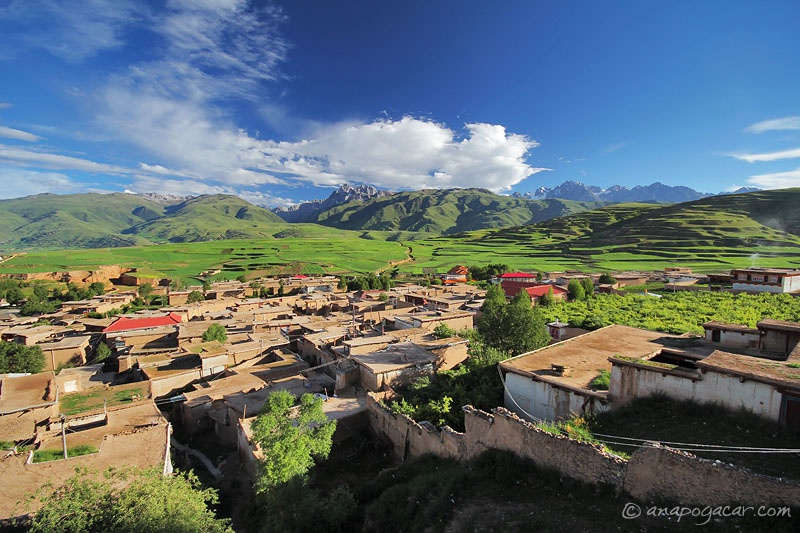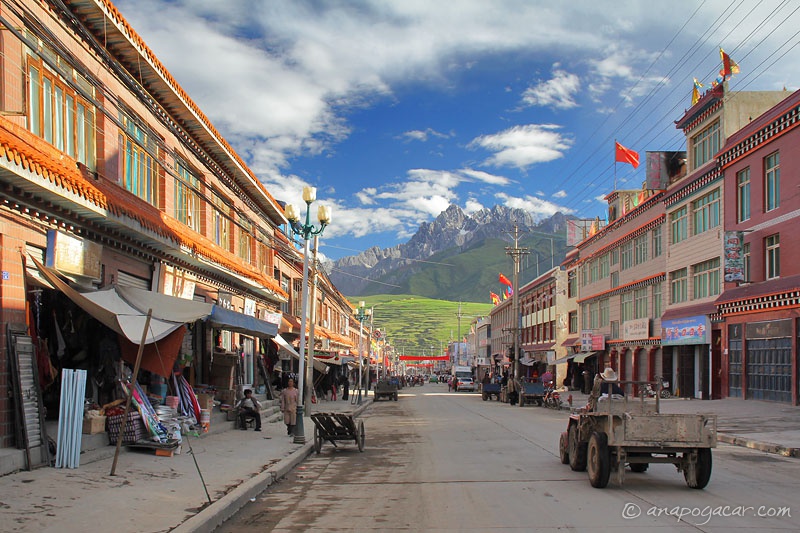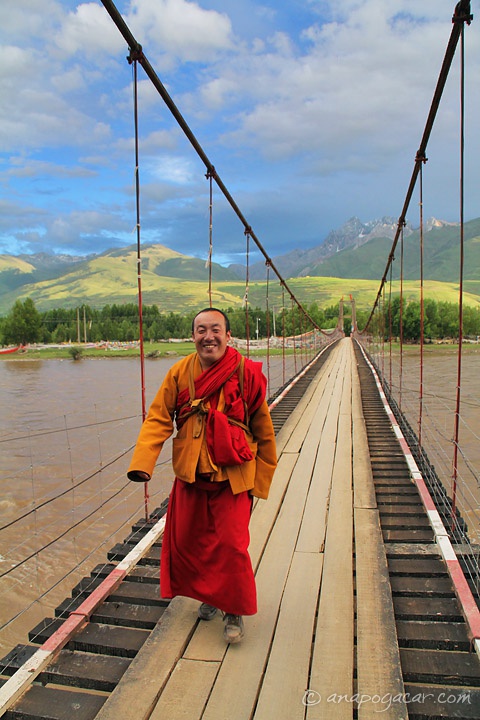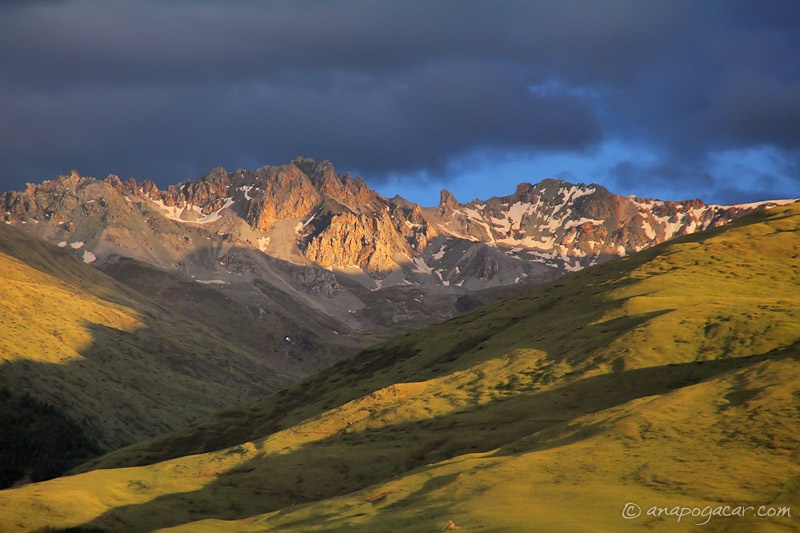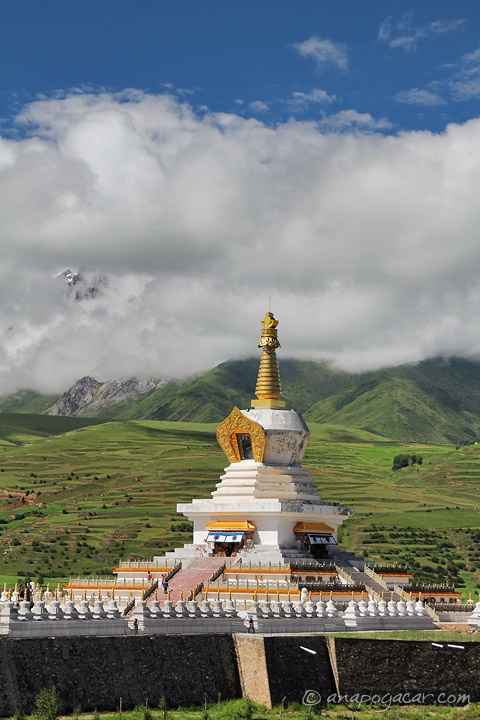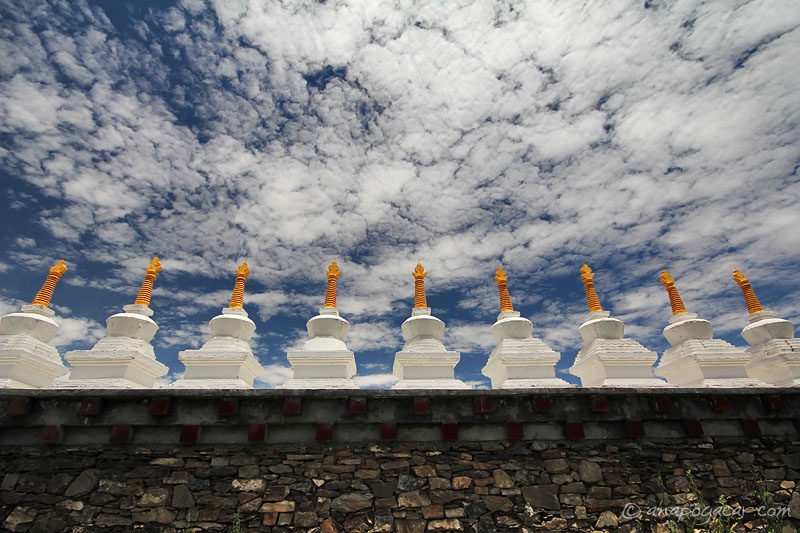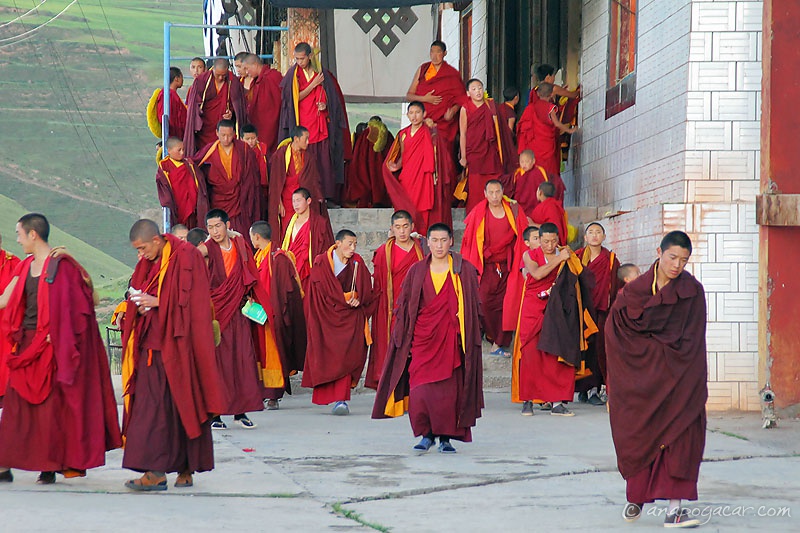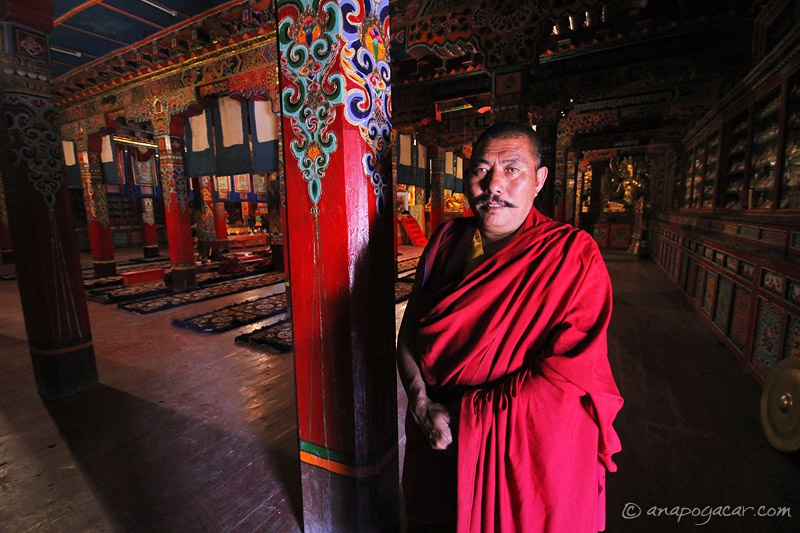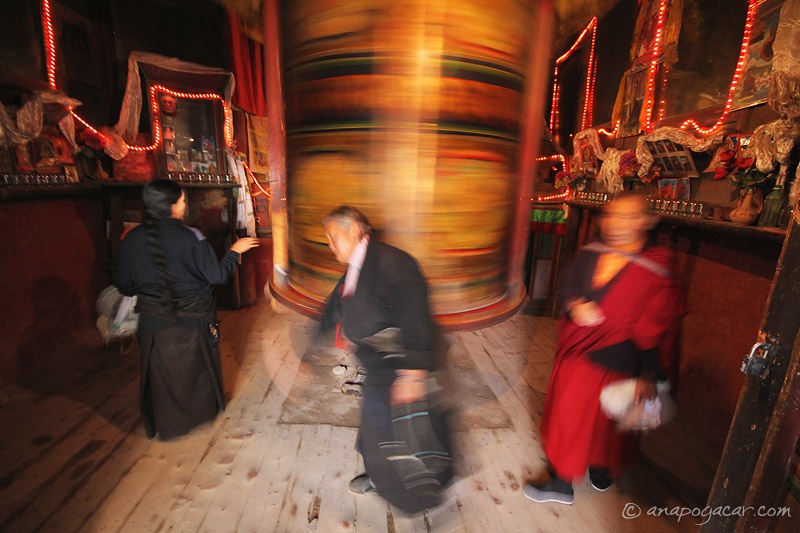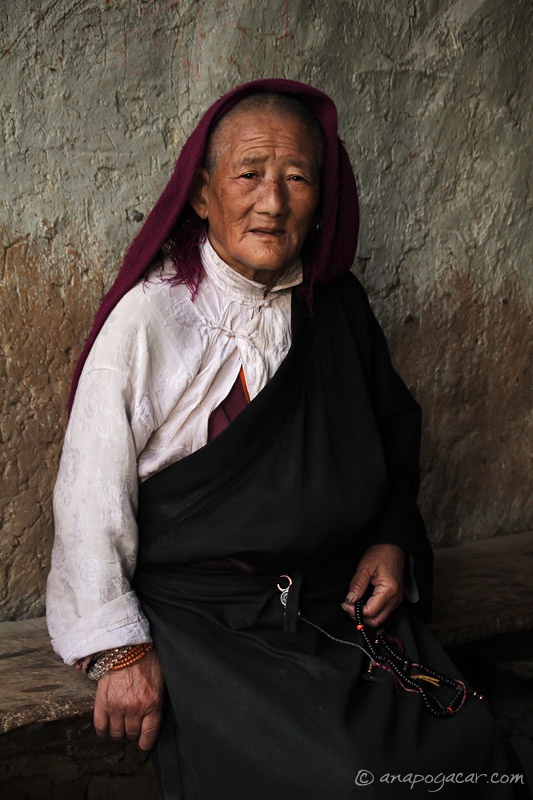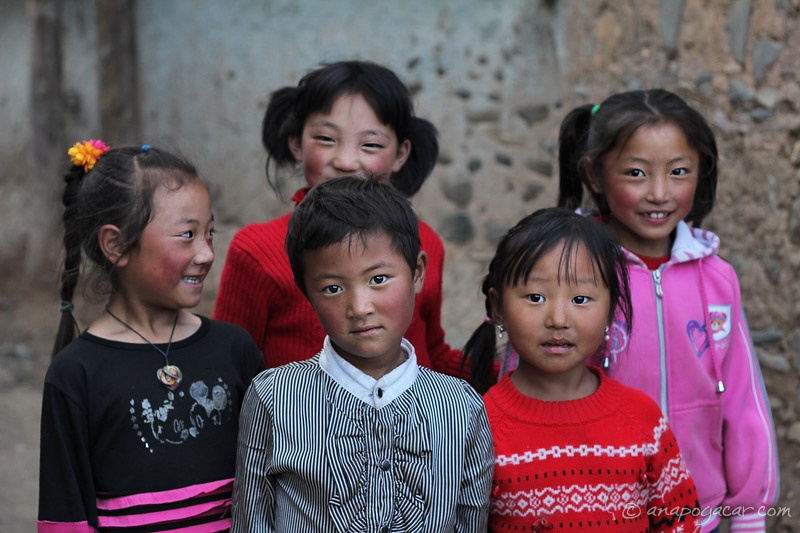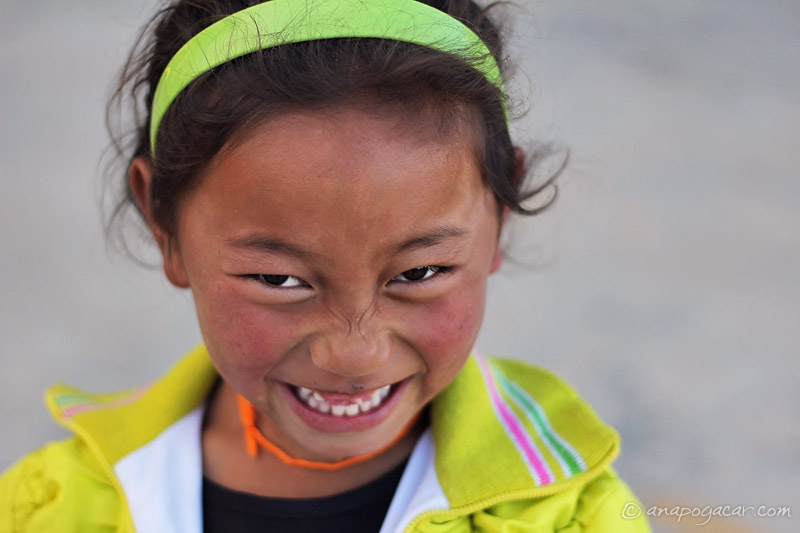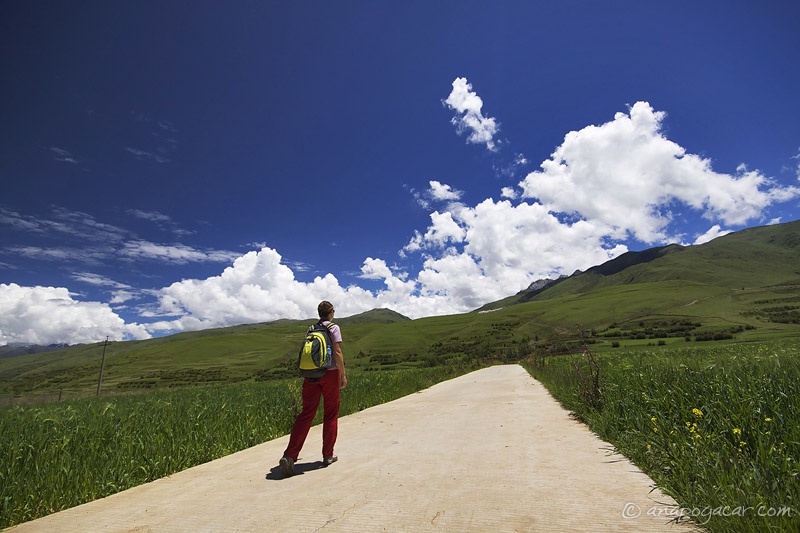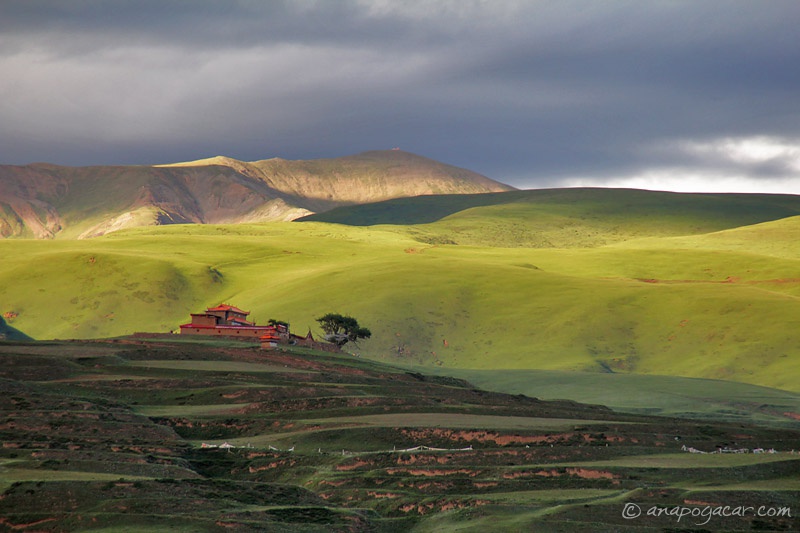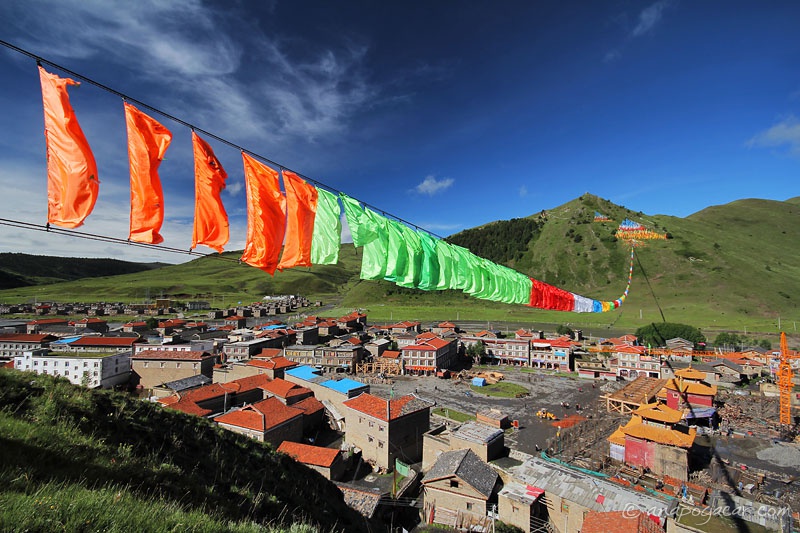
The main street with typical architecture: Tibetan stone houses with (mostly) flat roofs and decorated windows:

The monastery in town is circled by people everyday doing their kora. Prayer wheels practically never stop turning.
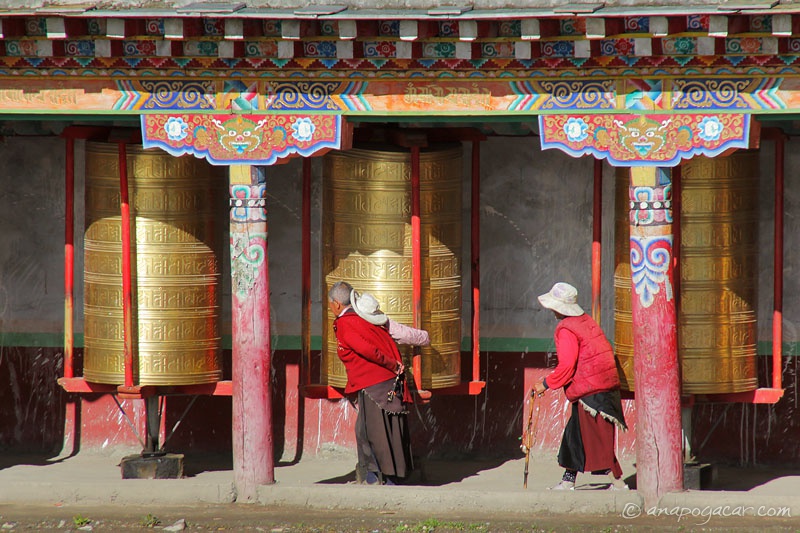
A local woman sewing prayer flags.
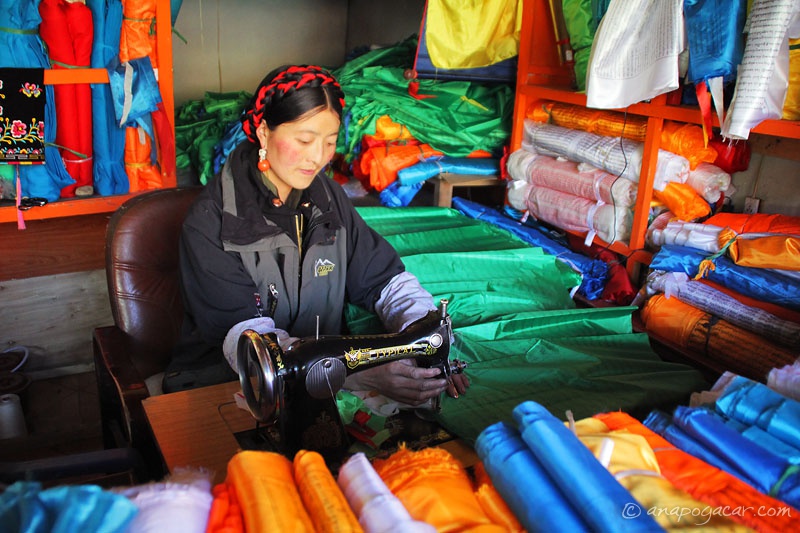
The weekend before our arrival a horse riding festival was held in Tagong attracting huge crowds of Tibetans who then set up camp on a hill above town. The area was full of tents, but as the festival was over, most people had already started to pack. Nevertheless, we were there early enough to enjoy the hospitality of a family who invited us in for a cup of tea and some pastry. Their little son wasn't too sure about posing though. :)
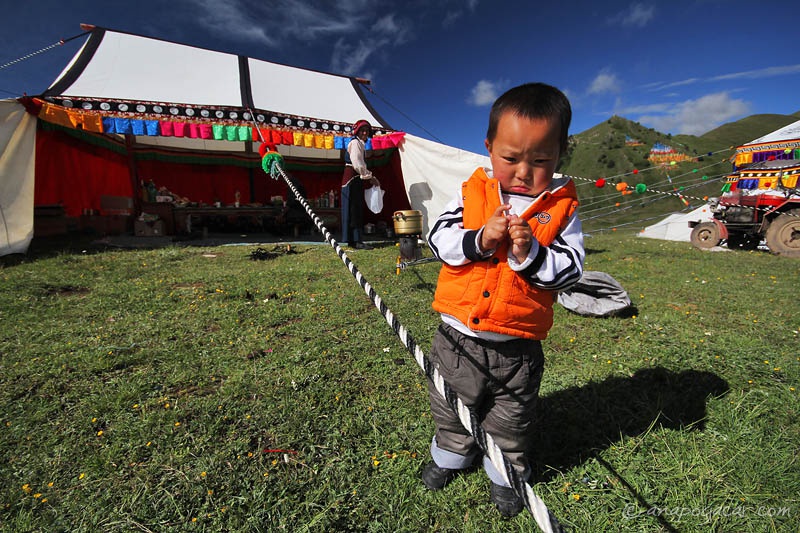

We hiked to a nearby village one afternoon where more of the typical Tibetan houses could be seen.
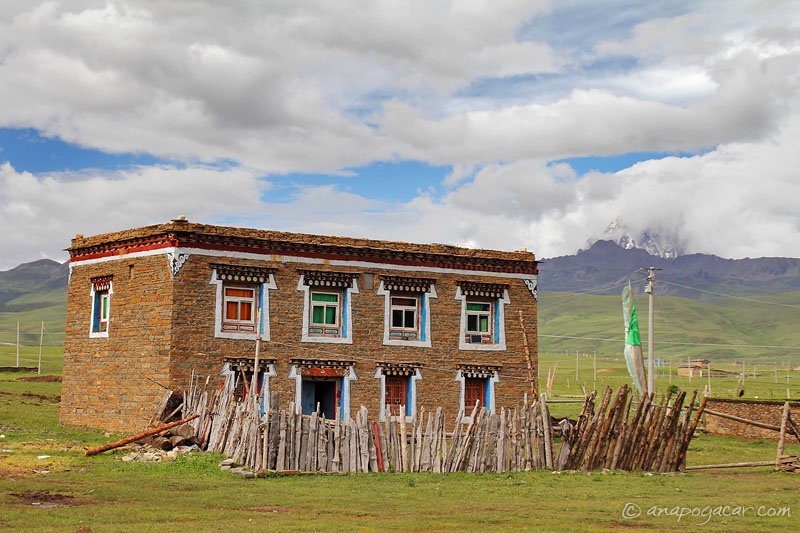
The main reason for our visit was the fact that the high plains in the vicinity of Tagong are populated by nomads living in black tents and herding yaks. We organized horses and a guide to get there and set off the following morning. After crossing a river and making our way along a valley we began to climb up a grassy hill. It was too steep to continue riding, so we dismounted and the guide led the horses to the top of the slope.
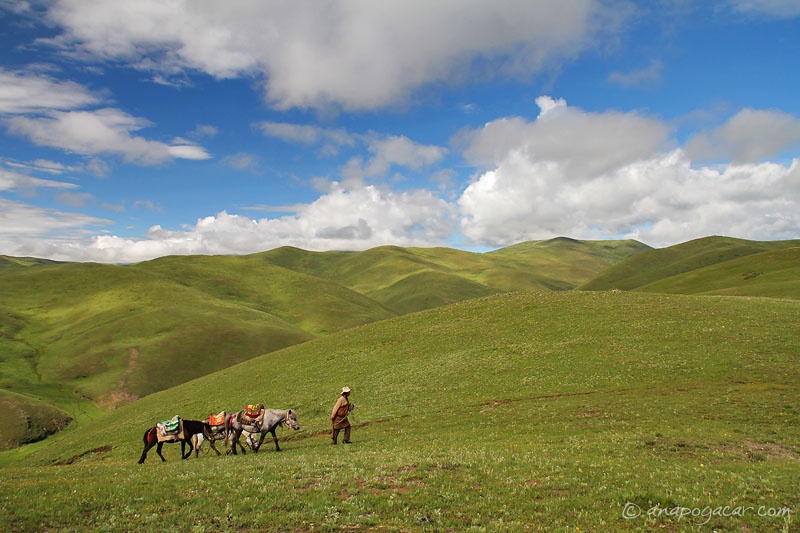
There were endless grassy plains around us. We passed a couple of uninhabited houses.

Our Tibetan guide with a cell phone.

After four hours of horseback riding we reached a plateau with gorgeous views of the surrounding mountains. At that point a woman from the nomad camp we were headed to joined us.
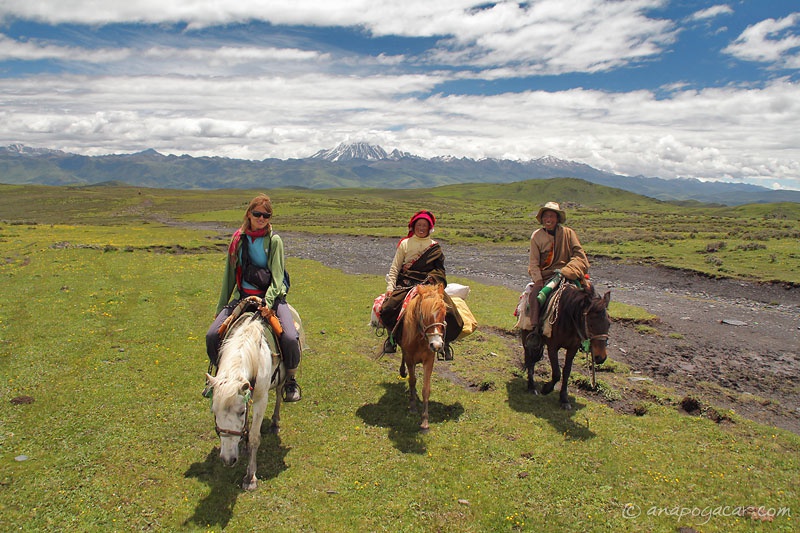
Soon the first herd of yaks came into view, grazing lazily on the endless pasture.

Five hours since the beginning of our trek we reached the camp where we would spend the following night: a "village" 0f five black tents.
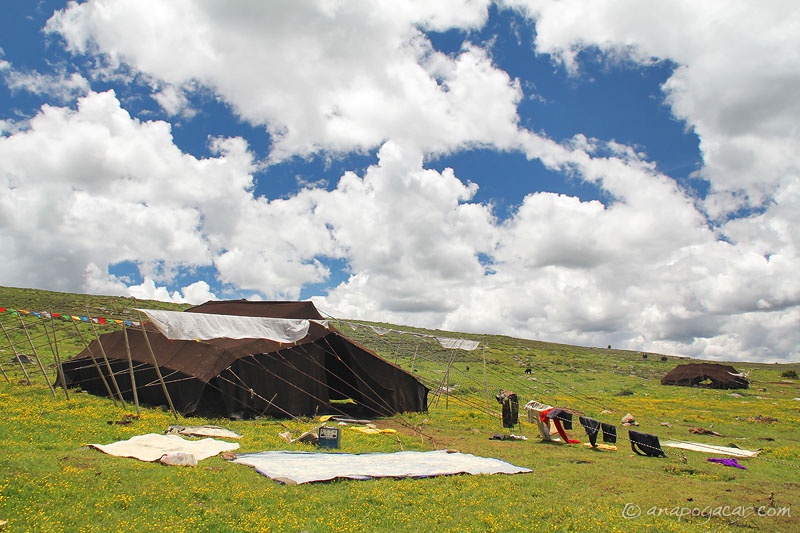
Some of the nomad families improve their income by allowing tourists to stay with them, offering them a tent, food and an opportunity to experience nomadic life on a high plateau. Our hostess Soku greeted us and immediately started to make lunch. The tent is a place to sleep, cook, eat and stay during bad weather, and it is also used as a shelter for baby yaks; they are too vulnerable to wolf attacks outside, so they are brought in at night. They sleep on one side of the tent and the people sleep on the other. In the middle, there is a fireplace, and during the day the roof of the tent is opened so that the smoke gets out. Most of it anyway. :)
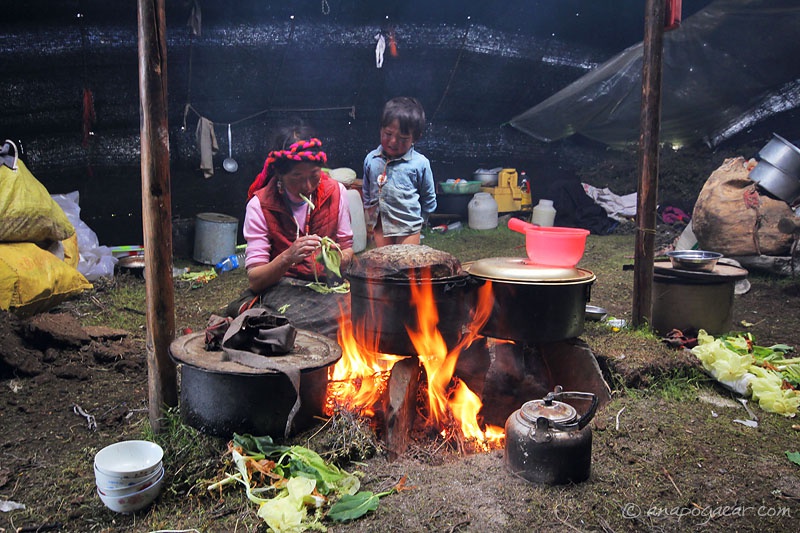
Soku was making some sort of dumplings which were steamed instead of cooked in boiling water.
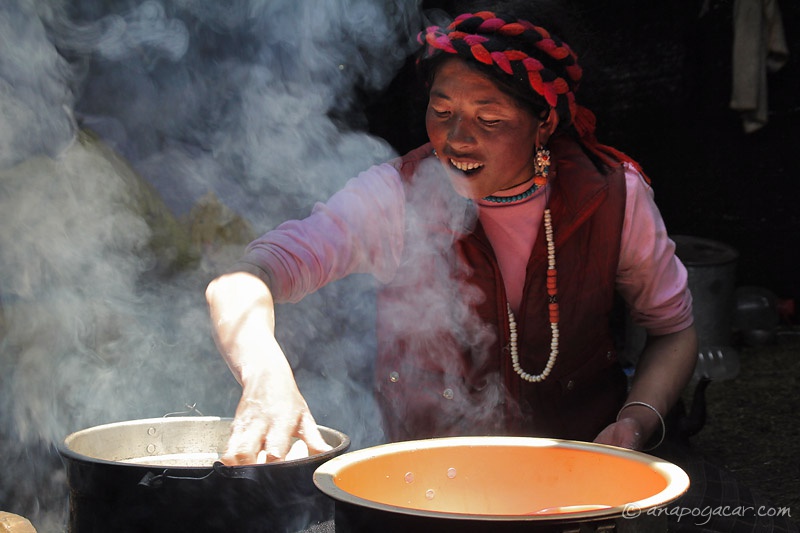
In general, she was very busy. When she wasn't cooking, she was preparing food, taking care of her three children, running around ...
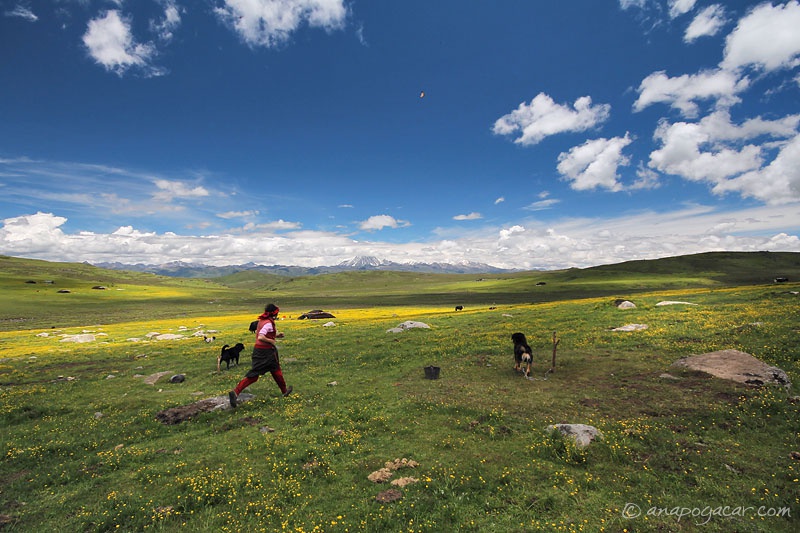
... milking yaks ...
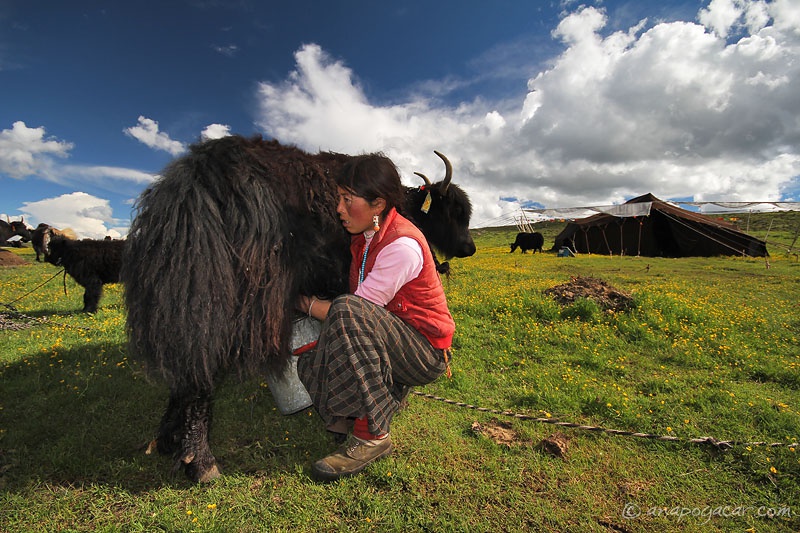
... while I was playing with her youngest, a cheeky 3-year-old boy.
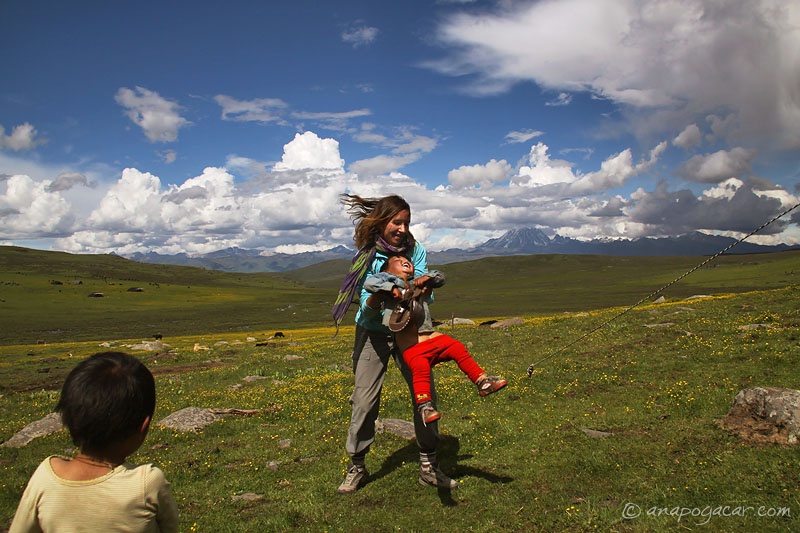
His face was constantly dirty and his nose runny. High altitude and cold winds turned his cheeks red.

Not far away a couple of vultures were feasting on a yak head.

I was also invited into the neighbors' tent. Nobody spoke English but they were eager to communicate with me, and they offered me some food and yak butter tea. There were no objections to me taking photos, on the contrary, after a few shy moments everybody was proud to see themselves on my camera LCD. Even the grandmother, who was just feeding the baby.

Children grow up fast. This boy was already able to take care of all chores in the camp at the age of 12. Here he was showing me a cut on his finger.

The weather kept changing the whole afternoon. After a few overcast hours the sun broke through the clouds to produce this wonderful sight. It was raining at the same time and I was trying hard to prevent the lens from getting wet.
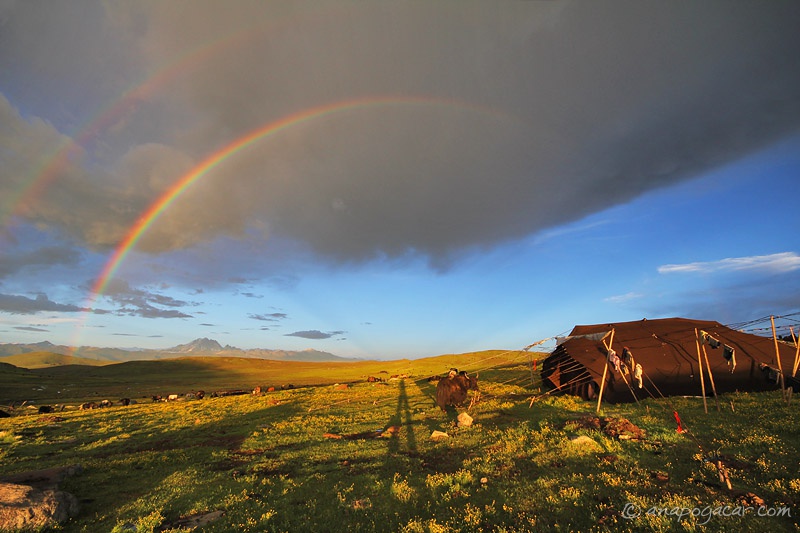
The sweet light was magical ...
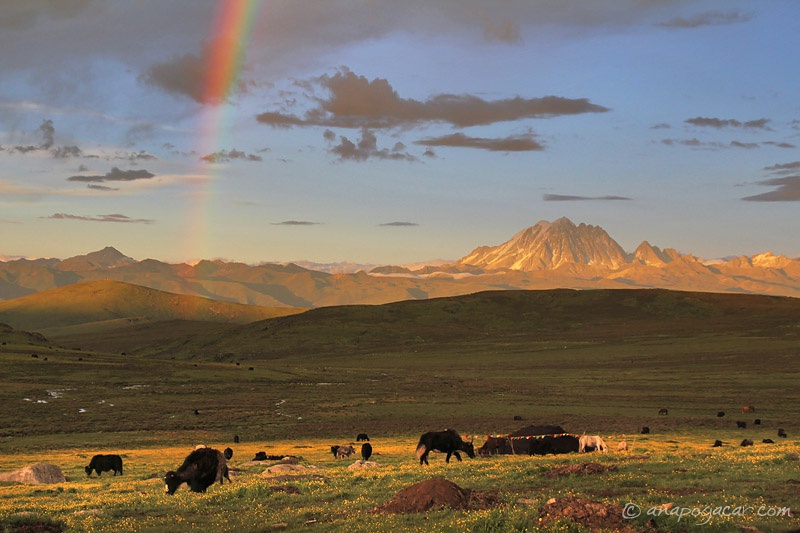
... and when the sun was gone, the clouds were still illuminated from below creating a wonderful spectacle in the sky behind our "white" (i.e. tourist) tent.
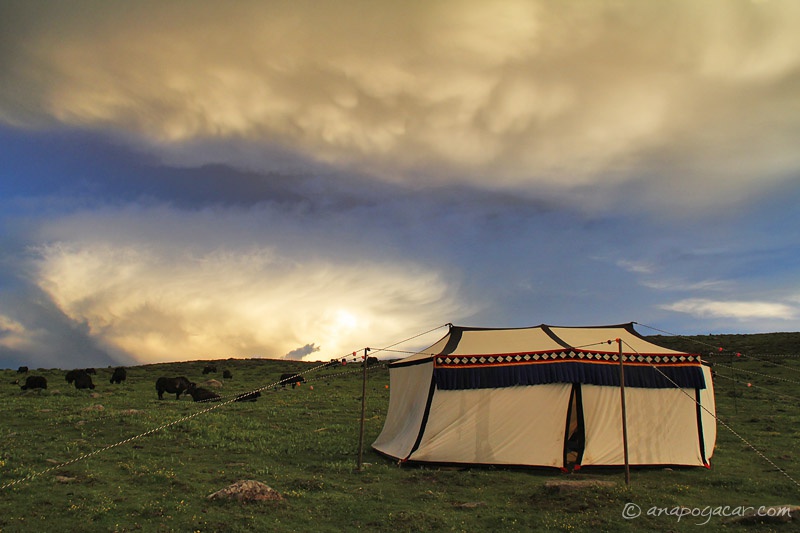 There is much more to be said about the nomads and their way of life, and I will try to do so in one of the following posts.
There is much more to be said about the nomads and their way of life, and I will try to do so in one of the following posts.

